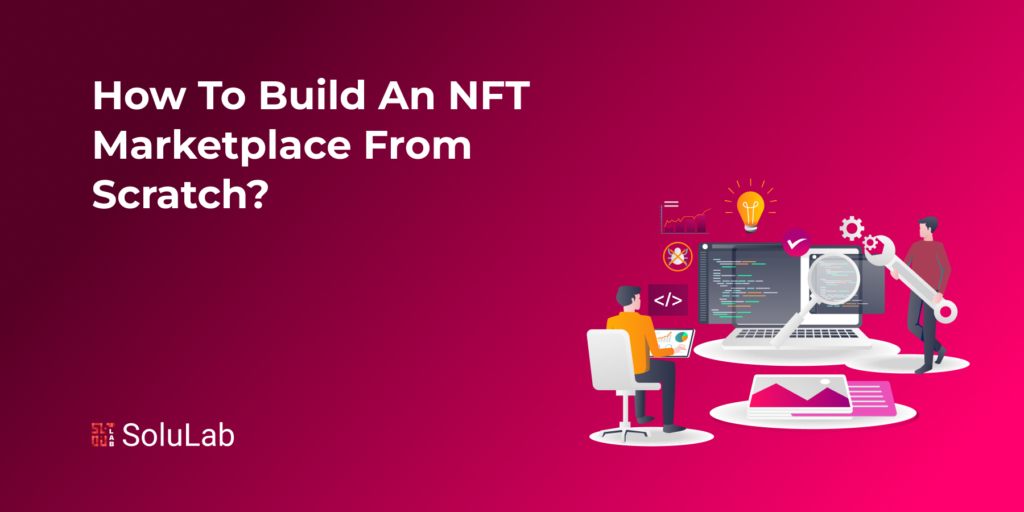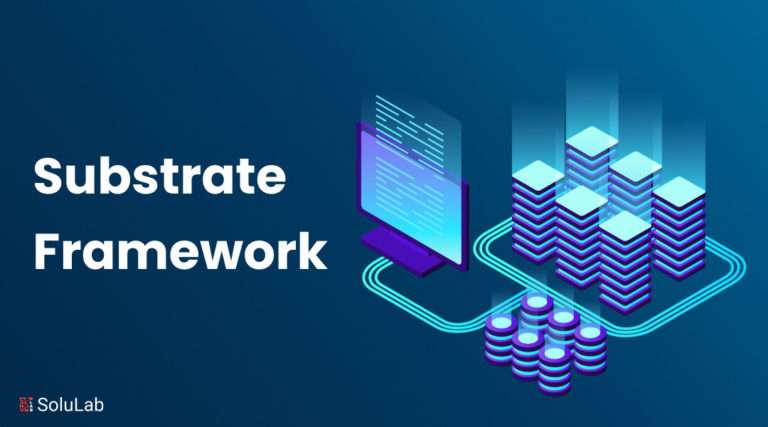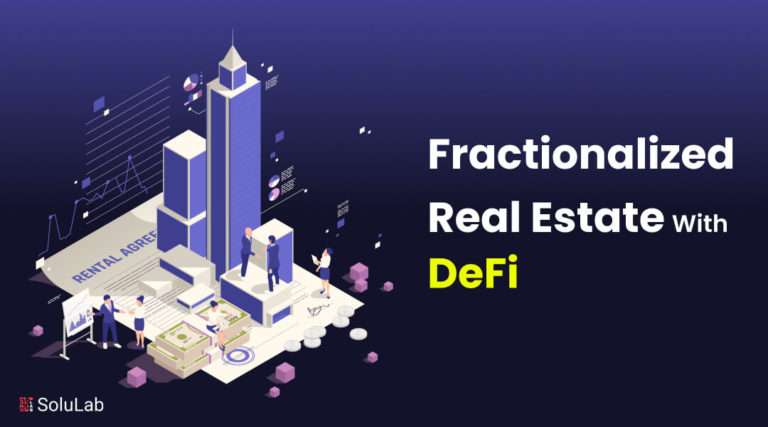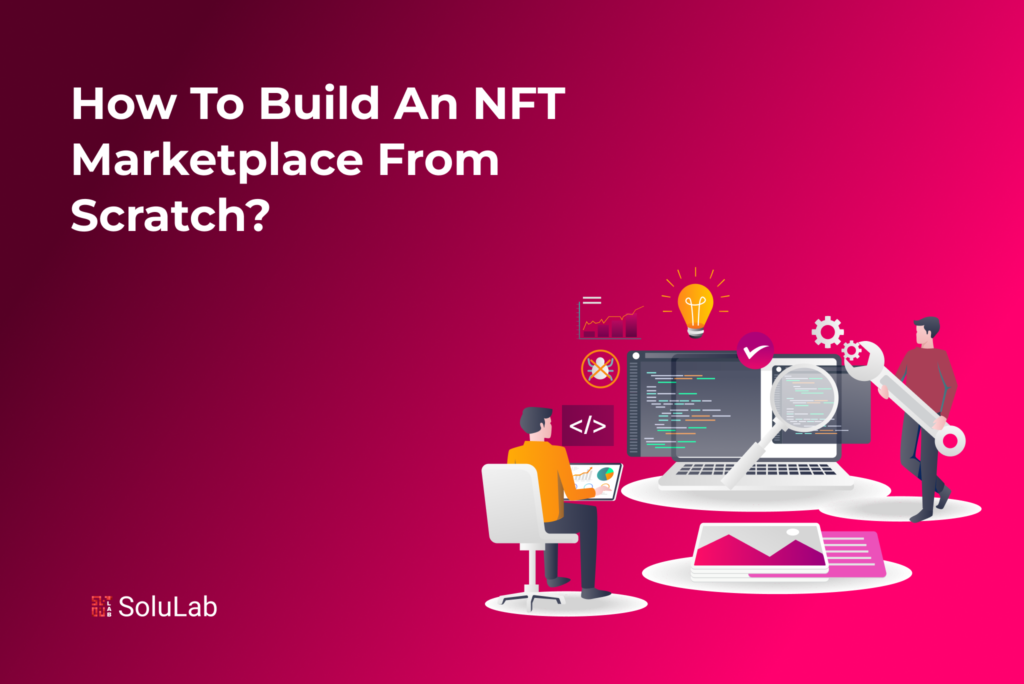
As the digital world continues to evolve, new opportunities arise for those ready to take the plunge. One such opportunity is the emergence of Non-Fungible Tokens (NFTs) and their associated marketplaces, which have taken the world by storm. This guide will walk you through creating your own NFT marketplace, including identifying your niche, choosing the right blockchain platform, designing and developing your marketplace, establishing smart contracts and tokenization, and launching and marketing your NFT marketplace.
Introduction
Have you heard of individuals purchasing items such as works of art featuring Vladimir Putin, digital kittens, or an NBA play? Do you, however, understand where these items originate from or how they are bought?
NFTs or Non-Fungible Tokens represent a unique digital asset whose uniqueness is determined by a unique value and set of metadata, making them impossible to interchange. They exist on a blockchain, ensuring their authenticity and ownership. From digital art to music, photography, and collectibles, NFTs can represent virtually anything. Consequently, and to build an NFT marketplace is a digital platform where these tokens can be bought and sold. Some marketplaces are general, while others specialize in specific types of NFTs and target a specific audience.
Build the NFT marketplace from scratch, The NFT market is the clear solution to the problem. (NFT, or non-fungible tokens, is used here.) “A digital token is an abbreviation to build an NFT marketplace. It was created expressly to be used as evidence of a digital certificate of ownership rights for items like tweets, real or imagined materials, codes, films, and much more. For instance, Jack Dorsey’s first tweet—best known as the co-founder of Twitter—was purchased as an NFT for $2.9 million.
Read Also: How to Build an NFT Marketplace on Ethereum Blockchain?
The NFT market is also sometimes referred to as a public Blockchain platform. Adding to it, NFTs evolved into the most extravagant cryptocurrency trend as a result of the convergence of more traditional investors looking to acquire these incredible blockchain-based assets and trying to build their own NFT marketplace. Most people do not know how to build an NFT marketplace
Why not create an NFT marketplace then, given the drastic reversal in NFTs? Awaken, Listen! The NFT market is something you need to consider whether you’re an established firm, a crypto enthusiast, or a startup co-founder. (Your ROI could benefit in a variety of ways; you just never know.) Maybe you were looking for information on how to build an NFT marketplace from scratch when you came to this post. However, we are confident that after reading this essay, you will have taken a step toward creating an NFT market. Everything you want to know is covered here. Examples include how to build an NFT marketplace; proposals for an NFT marketplace; well-known NFT apps and websites; and so forth. Here, we take a deep dive into the expanding NFT market!
What is NFT?
A non-fungible token is an unchangeable data storage unit that is kept on a blockchain. A type of digital ledger that may be traded and sold is the NFT. These tokens are distinctive digital assets, and the Ethereum NFT blockchain allows for ownership tracking.
What is an NFT Marketplace?
An NFT marketplace is what it sounds like if you’re considering building an NFT marketplace, but here’s the quick version: To build an NFT marketplace, to put it simply, a venue for the exchange of digital assets.
Anyone can build an NFT marketplace to sell or buy art, including music, in the virtual world, it doesn’t matter whether you are creating an NFT marketplace app or website but how do you create an NFT marketplace? The blockchain architecture used by NFT marketplaces provides a read-only record that contains a singular, non-fungible token.
Hans Hansen, CEO of Brand3D, a 3D technology company that develops immersive experiences for customers in a variety of industries including AI, 3D technologies, M2M automation, and more, says that once a token has been burned onto the blockchain, it offers the buyer of the NFT with a shred of foolproof ownership evidence that can be verified in the public domain.
Who can Create NFT?
Anyone can construct the NFT, including businesspeople, artists, photographers, writers, and producers. In this sector, experience is not necessary. The only thing you require is ownership of the NFT, which you intend to sell for a profit.
Who can Purchase the NFT?
Anyone who produced the NFT has the ability to mint and buy the NFT on the open market. You will be able to establish a special token on the blockchain with your name and artwork once you have the opportunity to buy the NFT.
Why Should You Invest in NFT Marketplace Today?
Because the market for NFT is expanding quickly, many investors are looking to invest in digital collectibles. There appears to have been a significant increase in the NFT Market starting in 2021. No one will be able to make duplicate works of art or digital collectibles at the same time as the original works since they will all be tokenized. The NFT Market has a lot of variables to take into account. Let’s talk about the benefits of making an investment in the NFT Marketplace right now.
- Support to the creators
- Remove redundancy in the artwork
- Display unique ownership
- Exclusive monetary benefits
Read Our Blog: Benefits Of An NFT Marketplace On Cardano
Most Popular NFT Marketplace of 2023
Whenever you are looking to acquire an NFT, it’s very important to understand which marketplace is appropriate for you and choose wisely. You can use these NFT marketplaces as examples:
- SoluLab
- NFT launchPad
- Crypto.com
- Binance
- OpenSea
- Nifty Gateway
- Rarible
Most Popular NFTs
We will now discuss the most well-liked NFTs of 2022.
- Yubo – Our Favorite NFT Project for 2022
- Crypto Baristas – NFTs for Coffee Lovers
- Doodles – Vote on the Future of Your NFT Community
- Invisible Friends – Best Animated NFT
- Mutant Ape Yacht Club – A Fresh Take on a Popular NFT Collection
Key Features of NFT Marketplace
- An attractive & intuitive Storefront for NFT Marketplace.
- The storefront will contain information such as previews, price history, bids, owner’s information, etc.
- Separate seller and buyer account inside
- Users can create and sell collectibles
- The NFT Marketplace platform gives you the opportunity to bid on your listed NFTs.
- Here you need to set up the Wallet first, named MetaMask
- The NFT marketplace platform will provide you to search the items or tokens
Read Also: Solana NFT Marketplace: How to build your own NFT Marketplace on Solana
How to Create Your Own NFT Marketplace from Scratch?
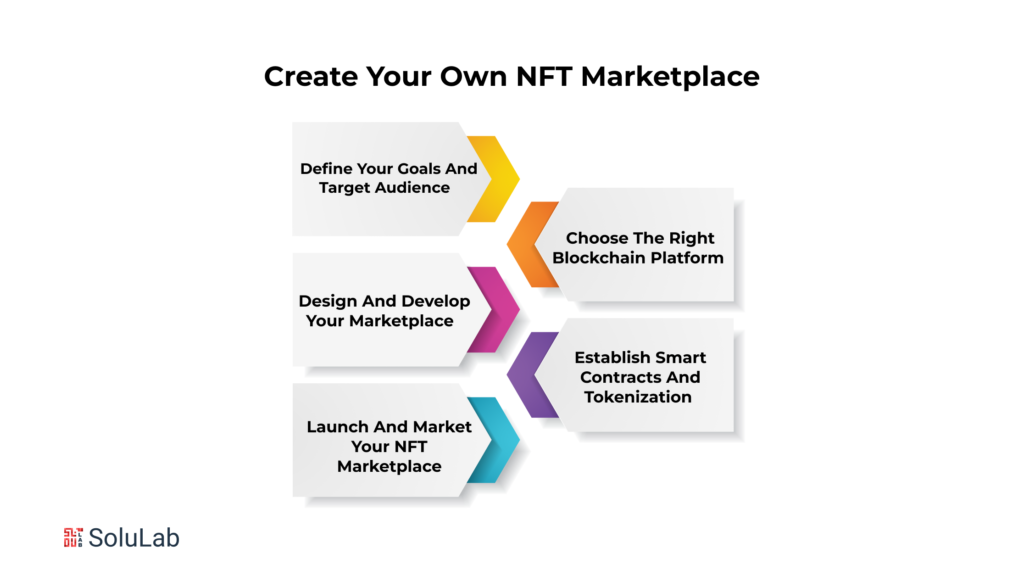
Step 1: Define Your Goals and Target Audience
The first step in creating an NFT marketplace is defining your goals and identifying your target audience. Do you want to create a general marketplace or one that specializes in a particular type of NFT? What do you hope to achieve with your marketplace? Answering these questions will help guide your decision-making process throughout the development of your marketplace.
Next, identify your target audience. Are they artists, collectors, gamers, or perhaps a mix of these groups? Understanding your audience’s needs and preferences will enable you to tailor your marketplace to their requirements, increasing its chances of success.
For example, if your target audience consists mainly of artists, you may want to focus on features that make it easy for them to upload and display their work. If your audience comprises collectors, features that ensure the authenticity and rarity of the NFTs might be more critical.
Step 2: Choose the Right Blockchain Platform
Choosing the right blockchain platform for hosting your NFTs is crucial. Different platforms offer varying degrees of scalability, security, and community support. Research the pros and cons of each platform and select the one that best aligns with your goals and requirements.
One popular choice for NFT marketplaces is Ethereum, thanks to its robust smart contract functionality and widespread adoption. However, other platforms like Binance Smart Chain, Flow, and Tezos are also gaining popularity due to lower transaction fees and faster transaction times.
Remember, the chosen platform will significantly influence your users’ experience, so it’s important to make an informed decision.
Step 3: Design and Develop Your Marketplace
Designing and developing your marketplace involves creating a user-friendly interface and implementing various features. This includes search and filtering options, user profiles, and payment integration. It’s also crucial to consider the overall aesthetic of your site, as this can greatly influence how users perceive your marketplace.
From a technical standpoint, developing an NFT marketplace involves front-end and back-end development. Frontend development focuses on the user interface and user experience, while backend development deals with the server side of the application, including database interactions and server logic.
It’s worth noting that the cost of NFT marketplace development typically falls within the range of $15,000 to $25,000. However, the actual cost can vary depending on various factors such as project complexity, desired features, and customization requirements.
Step 4: Establish Smart Contracts and Tokenization
Smart contracts are self-executing contracts with the terms of the agreement directly written into code. In the context of NFTs, smart contracts are used for minting and trading tokens. They ensure that each NFT is unique, authentic, and cannot be duplicated. Moreover, they facilitate transactions by automatically transferring ownership of the NFT from the seller to the buyer upon payment.
Tokenization is the process of converting rights to an asset into digital tokens on a blockchain. This is a critical aspect of NFTs, as it ensures the authenticity and ownership verification of the tokens.
Therefore, when establishing your NFT marketplace, it’s important to develop reliable smart contracts and implement robust tokenization protocols. This not only guarantees the functionality of your marketplace but also builds trust among your users.
Step 5: Launch and Market Your NFT Marketplace
After you’ve developed your NFT marketplace, it’s time to launch and market it. Here, a comprehensive marketing strategy can go a long way in attracting artists and collectors to your platform. Utilize social media, influencers, and partnerships to generate buzz around your marketplace and attract potential users. Also, consider offering exclusive content or promotions to entice users to check out your platform.
Furthermore, remember that launching your marketplace is just the beginning. To maintain interest and engagement, continuously promote your platform and update it with fresh content. Listen to your users’ feedback and make necessary improvements to better serve their needs.
Read Also: How To Launch Your Own NFT Marketplace Website in Less Than 2 Days?
How Much Does it Cost to Develop NFT Marketplace from Scratch?
The NFT Marketplace’s price is entirely determined by its size, available technology, client requirements, and list of market features. You now have a thorough knowledge of the market that we plan to create. The following factors determine the NFT market’s price:
- Number of features you want
- Tech Stack
- Developer’s cost
- Time for development
- Third-party APIs integration
How to Earn Money from NFTs?
The majority of NFT creators profit from the commissions they receive from the sale of NFTs. The NFT Marketplace system offers a variety of options to earn royalties:
-
Listing Fee
The user can be charged for the listing fee.
-
Gas Fee
To mint, purchase, and sell NFT and execute a blockchain transaction, you must pay the gas fee.
-
Trade NFTs
NFTs can now be purchased through trading. When you buy and sell NFTs, you can make a profit on the margin.
Conclusion
In conclusion, creating your own NFT marketplace can be a rewarding endeavor, given the rapid growth and popularity of NFTs. However, it requires careful planning, strategic decision-making, and technical know-how. By following the steps outlined in this guide, you can navigate the process more smoothly and increase the likelihood of your marketplace’s success. Remember, the key is to create a platform that caters to the needs of your target audience and offers a seamless user experience. So, whether you’re an entrepreneur looking for a new business venture or an artist wanting to monetize your digital creations, building an NFT marketplace could be a great opportunity.
SoluLab, a leading NFT development company, offers specialized NFT marketplace development services to businesses aiming to achieve their goals. With years of experience, SoluLab provides unparalleled NFT Marketplace Development Solutions tailored to the unique needs of its clients. The team of skilled NFT developers at SoluLab possesses extensive expertise, knowledge, and experience to deliver highly customizable solutions that effectively drive business growth. Standing out in the competitive NFT development space is made possible by hiring SoluLab’s team, which focuses on agile development and is committed to delivering exceptional business results. For a distinguished NFT development experience, contact SoluLab today.
FAQs
1. Can I build an NFT marketplace without any technical knowledge or experience?
Building an NFT marketplace from scratch typically requires a solid understanding of blockchain technology and web development. While it’s beneficial to have technical knowledge, you can still collaborate with a development team or hire experts who specialize in NFT marketplace development to bring your vision to life.
2. What are the key features to consider when building an NFT marketplace?
When building an NFT marketplace, it’s crucial to include features such as user authentication, NFT minting and listing, bidding and buying options, secure transactions, smart contract integration, wallet integration, metadata storage, and a user-friendly interface. These features ensure a seamless user experience and efficient marketplace operations.
3. Which blockchain network should I choose for my NFT marketplace?
Ethereum is the most popular blockchain network for NFTs, known for its robust smart contract functionality and large user base. However, other blockchain networks like Binance Smart Chain, Flow, and Polygon are also gaining traction in the NFT space. Consider factors such as scalability, transaction costs, and community support when selecting the blockchain network for your NFT marketplace.
4. How can I monetize my NFT marketplace?
There are several monetization options for an NFT marketplace. You can charge transaction fees or commissions on NFT sales, offer premium listing options for higher visibility, provide advertising spaces for brands, or offer subscription-based services to access exclusive features. Choose a monetization strategy that aligns with your business goals and provides value to your users.
5. What security measures should I implement in my NFT marketplace?
Security is paramount in an NFT marketplace to protect users’ digital assets and ensure trust. Implement robust security measures such as two-factor authentication, encrypted data storage, secure payment gateways, comprehensive smart contract audits, and regular security assessments. Collaborate with cybersecurity experts to identify and address potential vulnerabilities in your marketplace.


